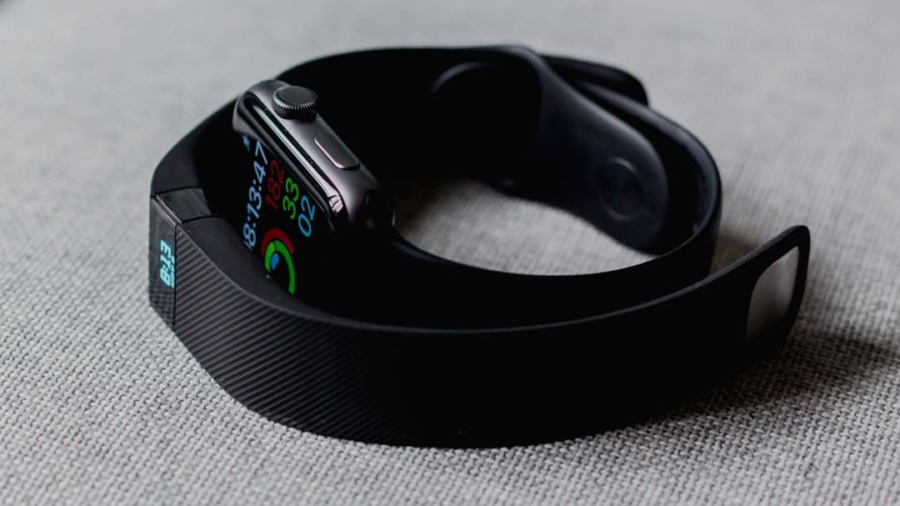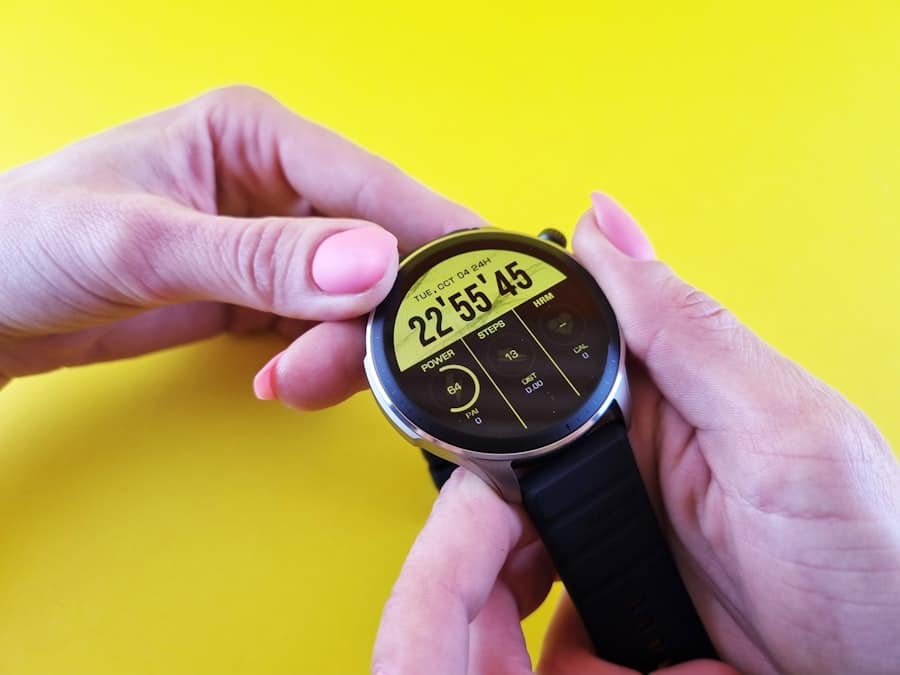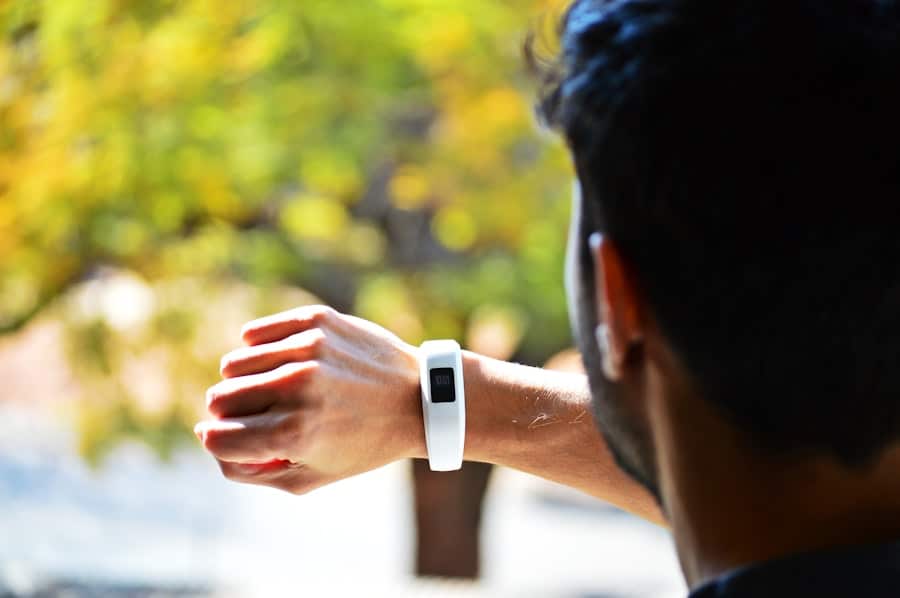The advent of wearable technology has revolutionized various sectors, including healthcare, where it has emerged as a pivotal tool for monitoring mental health conditions such as Post-Traumatic Stress Disorder (PTSD). Wearables, which encompass devices like smartwatches, fitness trackers, and specialized sensors, offer real-time data collection and analysis, enabling a more nuanced understanding of an individual’s mental state. This technology is particularly significant for PTSD, a condition that affects millions globally, often leading to debilitating symptoms that can severely impact daily functioning.
By leveraging wearables, healthcare providers can gain insights into physiological markers associated with stress and anxiety, facilitating timely interventions and personalized treatment plans. The integration of wearables into behavioral health monitoring represents a paradigm shift in how mental health conditions are understood and managed. Traditional methods of assessment often rely on self-reported data, which can be subjective and influenced by various factors, including stigma and the individual’s current emotional state.
In contrast, wearables provide objective data that can track physiological responses such as heart rate variability, sleep patterns, and physical activity levels. This objective data can complement clinical assessments, offering a more comprehensive view of a patient’s mental health status. As the field of behavioral health continues to evolve, the role of wearables in monitoring PTSD is becoming increasingly critical, promising to enhance both patient outcomes and the overall efficacy of treatment strategies.
Key Takeaways
- Wearable technology has the potential to revolutionize the monitoring of PTSD and behavioral health by providing continuous, real-time data.
- Current challenges in monitoring PTSD and behavioral health include the lack of objective data and the reliance on self-reporting, which can be unreliable.
- The potential benefits of wearables in monitoring PTSD and behavioral health include early detection of symptoms, personalized interventions, and improved treatment outcomes.
- Technology plays a crucial role in improving PTSD and behavioral health monitoring by providing objective data, enhancing accessibility, and enabling remote monitoring.
- Ethical considerations in using wearables for PTSD and behavioral health monitoring include privacy concerns, data security, and the potential for stigmatization.
Current Challenges in Monitoring PTSD and Behavioral Health
Despite the promising potential of wearables in monitoring PTSD and behavioral health, several challenges persist that hinder their widespread adoption and effectiveness. One significant issue is the variability in individual responses to trauma and the subsequent manifestation of PTSD symptoms. Each person’s experience with trauma is unique, leading to a diverse range of symptoms that may not be easily captured by standardized wearable metrics.
For instance, while some individuals may exhibit increased heart rates during stress, others may not show any significant physiological changes. This variability complicates the interpretation of data collected from wearables, making it challenging for healthcare providers to draw definitive conclusions about an individual’s mental health status. Another challenge lies in the technological limitations of current wearable devices.
Many wearables are designed primarily for fitness tracking and may not possess the advanced capabilities required for comprehensive mental health monitoring. For example, while devices can effectively measure heart rate and physical activity, they may lack the sensitivity needed to detect subtle changes in emotional states or stress levels. Additionally, issues related to data accuracy and reliability can arise from factors such as device placement, user compliance, and environmental influences.
Potential Benefits of Wearables in Monitoring PTSD and Behavioral Health
The potential benefits of integrating wearables into the monitoring of PTSD and behavioral health are manifold. One of the most significant advantages is the ability to provide continuous, real-time data on an individual’s physiological responses to stressors. This continuous monitoring can help identify patterns and triggers associated with PTSD symptoms, allowing for timely interventions when needed.
For instance, if a wearable device detects an increase in heart rate or changes in sleep patterns that correlate with specific events or environments, clinicians can use this information to tailor therapeutic approaches or recommend coping strategies that address these triggers. Moreover, wearables can empower individuals with PTSD by fostering greater self-awareness and engagement in their treatment process. Many devices come equipped with user-friendly interfaces that allow individuals to track their own data over time.
This self-monitoring capability can encourage patients to take an active role in managing their mental health, promoting adherence to treatment plans and enhancing motivation for behavioral changes. For example, a patient might notice that their anxiety levels spike during certain activities or interactions, prompting them to discuss these observations with their therapist. This collaborative approach can lead to more personalized care and improved therapeutic outcomes.
The Role of Technology in Improving PTSD and Behavioral Health Monitoring
Technology plays a crucial role in enhancing the effectiveness of wearables for monitoring PTSD and behavioral health. Advanced algorithms and machine learning techniques are increasingly being employed to analyze the vast amounts of data generated by these devices. By utilizing artificial intelligence (AI), healthcare providers can identify trends and correlations within the data that may not be immediately apparent through traditional analysis methods.
For instance, AI can help detect subtle changes in physiological responses that precede the onset of PTSD symptoms, enabling proactive interventions before a crisis occurs. Additionally, the integration of mobile applications with wearable devices further enhances their utility in monitoring mental health. These applications can provide users with insights into their data through visualizations and personalized feedback, making it easier for individuals to understand their mental health patterns.
Furthermore, many apps offer features such as guided mindfulness exercises or cognitive-behavioral therapy (CBT) techniques that users can access directly from their devices.
Ethical Considerations in Using Wearables for PTSD and Behavioral Health Monitoring
The use of wearables for monitoring PTSD and behavioral health raises several ethical considerations that must be addressed to ensure responsible implementation. One primary concern is the issue of privacy and data security. Wearable devices collect sensitive personal information related to an individual’s mental health status, which raises questions about who has access to this data and how it is stored.
Ensuring robust data protection measures is essential to prevent unauthorized access or misuse of personal information. Healthcare providers must establish clear protocols regarding data sharing and obtain informed consent from patients before collecting or utilizing their data. Another ethical consideration involves the potential for over-reliance on technology in mental health care.
While wearables can provide valuable insights into an individual’s condition, they should not replace traditional therapeutic approaches or face-to-face interactions with healthcare professionals. There is a risk that patients may become overly dependent on their devices for monitoring their mental health, leading to anxiety or distress if they perceive negative changes in their data. It is crucial for clinicians to emphasize the importance of a holistic approach to treatment that combines technology with human interaction and support.
Innovations in Wearable Technology for PTSD and Behavioral Health Monitoring
Recent innovations in wearable technology have significantly advanced the capabilities of devices designed for monitoring PTSD and behavioral health. One notable development is the emergence of biosensors that can measure a wider range of physiological indicators beyond basic metrics like heart rate or steps taken. For example, some wearables now incorporate sensors capable of detecting galvanic skin response (GSR), which measures sweat gland activity as an indicator of emotional arousal.
This level of detail allows for a more nuanced understanding of an individual’s stress response and emotional state. Additionally, advancements in machine learning algorithms have enabled more sophisticated data analysis techniques that can identify patterns associated with PTSD symptoms more accurately. These algorithms can learn from individual user data over time, adapting their analyses based on unique responses to stressors or therapeutic interventions.
Such innovations not only enhance the accuracy of monitoring but also facilitate personalized treatment recommendations tailored to each individual’s needs.
The Future of Wearables in Integrating with Traditional Treatment for PTSD and Behavioral Health
Looking ahead, the future of wearables in monitoring PTSD and behavioral health appears promising as they become increasingly integrated with traditional treatment modalities. The potential for wearables to serve as adjuncts to therapy is particularly noteworthy; they can provide clinicians with real-time data that informs treatment decisions while allowing patients to engage actively in their care process. For instance, therapists could use data from wearables during sessions to discuss specific triggers or patterns observed by the patient, fostering a collaborative approach to treatment planning.
Moreover, as telehealth continues to gain traction, wearables could play a vital role in remote monitoring and support for individuals with PTSD. With the ability to transmit data directly to healthcare providers, wearables can facilitate ongoing communication between patients and clinicians without requiring frequent in-person visits. This capability is especially beneficial for individuals living in remote areas or those who may have difficulty accessing traditional mental health services due to mobility issues or stigma associated with seeking help.
The Potential Impact of Wearables in Monitoring PTSD and Behavioral Health
The integration of wearable technology into the monitoring of PTSD and behavioral health holds immense potential for transforming how these conditions are understood and treated. By providing real-time data on physiological responses and fostering greater self-awareness among patients, wearables can enhance both clinical assessments and therapeutic outcomes. However, addressing challenges related to data variability, technological limitations, privacy concerns, and ethical considerations will be crucial for realizing this potential fully.
As innovations continue to emerge within this field, the collaboration between technology developers, healthcare providers, and patients will be essential in shaping effective solutions tailored to individual needs. The future landscape of mental health care may very well be defined by this synergy between advanced technology and traditional therapeutic practices, ultimately leading to improved quality of life for those affected by PTSD and other behavioral health conditions.
In addition to exploring the future of wearables in monitoring PTSD and behavioral health, it is important to consider the best tools available for students in 2023. A recent article on the best tablets for students in 2023 provides valuable insights into the technology that can enhance learning experiences. By understanding the latest advancements in educational tools, we can better support individuals in managing their mental health and overall well-being.
FAQs
What are wearables in the context of monitoring PTSD and behavioral health?
Wearables are electronic devices that can be worn on the body as accessories or implants. They are equipped with sensors and software that collect data and track various aspects of a person’s health and behavior.
How can wearables be used to monitor PTSD and behavioral health?
Wearables can track physiological indicators such as heart rate, skin conductance, and movement patterns, which can provide insights into a person’s stress levels and emotional state. This data can be used to monitor symptoms of PTSD and other behavioral health conditions.
What are the potential benefits of using wearables for monitoring PTSD and behavioral health?
Wearables can provide continuous, real-time data on a person’s physiological and behavioral patterns, allowing for more accurate and timely monitoring of symptoms. This can lead to earlier intervention and more personalized treatment approaches.
What are the challenges associated with using wearables for monitoring PTSD and behavioral health?
Challenges include ensuring the accuracy and reliability of the data collected, addressing privacy and data security concerns, and integrating wearable data into existing healthcare systems and practices.
What is the future outlook for wearables in monitoring PTSD and behavioral health?
The future of wearables in this context is promising, with ongoing advancements in sensor technology, data analytics, and artificial intelligence. As these technologies continue to improve, wearables have the potential to play a significant role in the monitoring and management of PTSD and behavioral health conditions.



